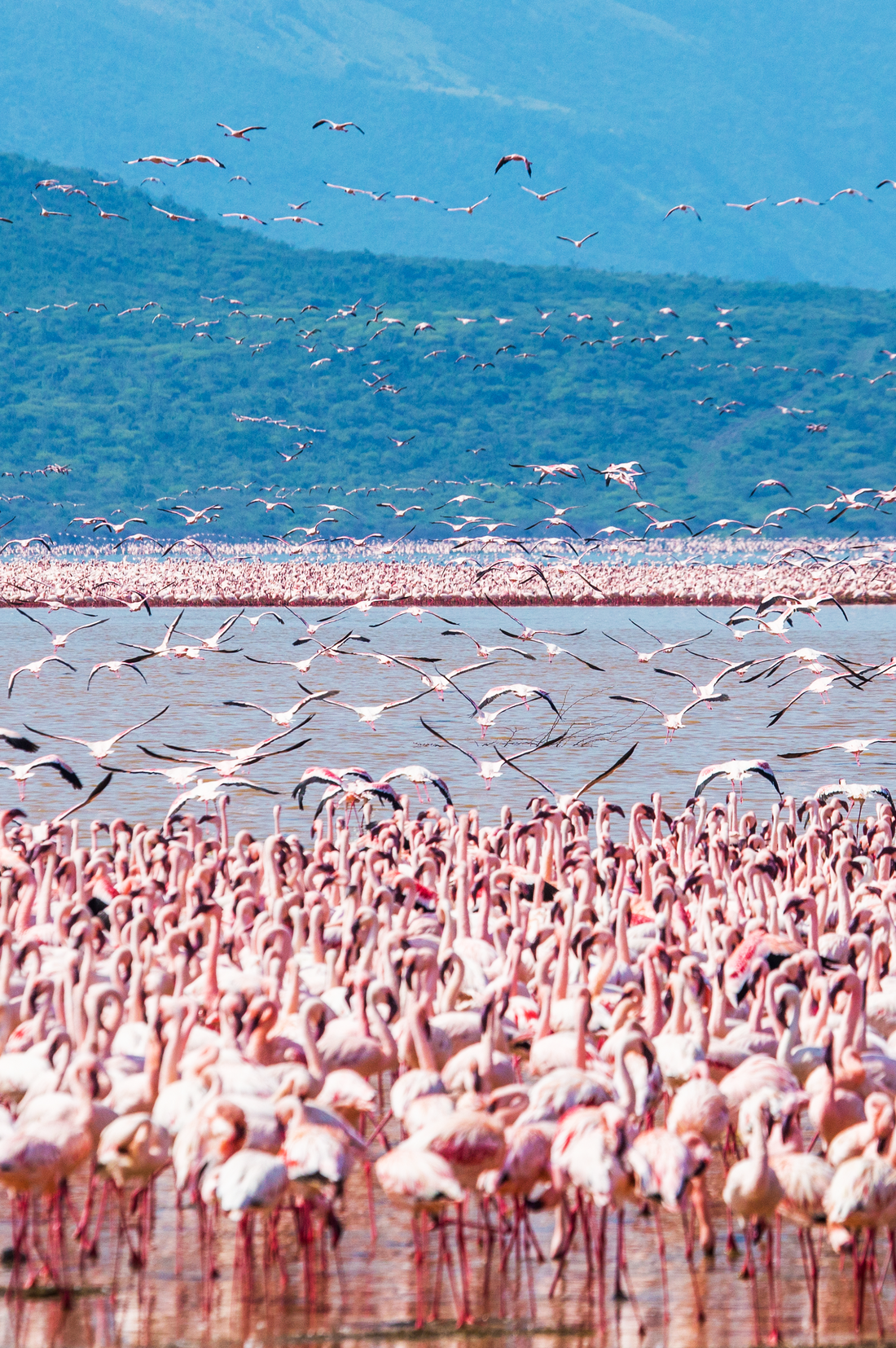
Why Flamingos Call Lake Nakuru Home: Nature’s Pink Spectacle
In the picturesque reaches of the Kenyan Great Rift Valley lies Lake Nakuru, which supports an exceptional biodiversity. The beauty of the lake lies in its surrounding landscape of acacia forests and vast grasslands adorned with rocky cliffs like the Baboon Cliff, which become vantage points for tourists to witness its pulsing pink swathe as millions of flamingos flock to it in dry seasons, which magnifies its charm. This makes Kenya potentially the best country to visit in Africa.
Flamingos call this shallow, alkaline soda lake their home all year round, feeding on the algae that thrives in its waters. Here’s a description of this delicate ecosystem nature has created:
Foraging in harsh, saline water conditions
Lake Nakuru is distinguished by its warm, alkaline, and brackish waters that have concentrations of salts and volcanic minerals, making it a thriving ground for alkaline halophiles like flamingos. The salinity and alkalinity are perfect for the growth of blue-green algae and microorganisms, which comprise the staple diet of flamingos. Moreover, the shallow water levels are perfect for flamingos to thrive due to their unique beaks that have lamellae that pump out the water and mud while trapping food in their beaks, making the best of the natural environment.
However, this is not merely a one-way exchange. The activity is pivotal for maintaining the delicate ecosystem balance of the soda water lake, Nakuru, as when flamingos consume the algae and other organisms, they leave behind guano that causes an influx of nutrients, which in turn regulates the microbial dynamic and food web of the lake.In simple words, flamingos are an essential part of the food chain, as they help in the cycling of nutrients to keep the lake’s ecosystem alive.
Stronghold for nesting and breeding
Surrounded by wooded and bushy grasslands, Lake Naruku is a breathtaking spectacle. But it also serves as a fortress that protects flamingos, as the alkaline and brackish water of the lake is uninhabitable for predators like leopards and lions and other large carnivores. Moreover, as a vast open landscape, the national park assists flamingos in keeping vigilance with little to no place for predators to launch hidden attacks. Coupled with a shallow water level, the lake becomes ideal for flamingos to build nests and breed.
Conclusion
Lake Nakuru is an irreplaceable ecosystem that gives shelter to nomadic birds like flamingos, allowing them to maintain their populations. As a flamingo hub, it often hosts millions of flamingos, during which all tourists can see is the beautiful blend of pink in the blue hues of Lake Nakuru, placing Lake Nakuru amongst the top sustainable travel destinations.
Lake Nakuru, a UNESCO World Heritage Site, is part of the Kenya Lake System in the Great Rift Valley and a crucial site for avian conservation that provides shelter to 13 endangered bird species. It serves as a major foraging and breeding ground for flamingos and great white pelicans. As climate change is threatening this ecosystem, the importance of promoting sustainable and green tourism cannot be overstated. Travgreen is doing its part by popularising sustainable travel destinations with itineraries and travel plans that prove luxury and sustainability can go hand in hand if done with enough environmental compassion.